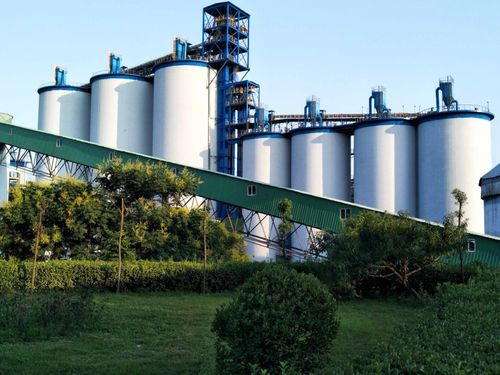1. Characteristics of Cement Raw Meal Calcination
The calcination of cement raw meal is a complex high-temperature heterogeneous reaction process, with reactivity influenced by multiple factors:
Raw material properties: Physical characteristics, geological origin, and mineral composition.
Raw meal properties: Fineness, chemical composition, particle size distribution, homogeneity, and modulus values.
During high-temperature calcination, the intrinsic properties of raw materials directly determine reactivity, with liquid phase viscosity and liquid phase volume playing a decisive role in the formation rate of clinker minerals. Variations in modulus values and raw material characteristics lead to significant differences in burnability, ultimately affecting clinker quality, production output, and energy consumption.
2. Influence of Raw Meal Fineness on Calcination
Particle size is a critical parameter affecting burnability, with a dual impact:
Excessive coarseness: Significantly reduces burnability and compromises clinker quality.
Excessive fineness: Substantially decreases mill output and increases power consumption.
2.1 Mechanism of Fineness Impact on Calcination Quality
The control standard for raw meal fineness differs fundamentally from that of cement. While cement requires a certain proportion of fine particles (10–20 μm, known as “hydration flowers”) to ensure hydration rate, raw meal benefits from a more uniform particle size distribution to optimize calcination reactions.
Research data indicate:
Particles >200 μm severely degrade burnability.
Coarse particles cause:
a) Abnormal microstructure: Unreacted free lime (f-CaO) around alite (A矿).
b) Delayed reactions: Higher calcination temperatures required for complete sintering.
c) Negative effects: Increased free lime content, reduced kiln output, and higher energy consumption.
2.2 Optimal Balance in Fineness Control
Excessive fineness is also undesirable:
Mill output decreases by 30–50%.
Power consumption rises by 15–25%.
Economic efficiency declines significantly.
3. Empirical Study on Fineness Control
A comparative analysis of Cement Plant A and Cement Plant B was conducted to determine optimal fineness parameters.
3.1 Raw Material Composition Analysis
Quartz content calculation:
Crystalline Quartz=SiO2−1.17Al2O3Crystalline Quartz=SiO2−1.17Al2O3
*(Note: For clay with unmeasured K/Na content, the error margin is ~10%)*
3.2 Sieve Residue Analysis
Chemical analysis of 0.2 mm and 0.08 mm sieve residues revealed:
Plant A: At 0.08 mm residue = 10.9%, composition matched raw meal.
Plant B: At 0.08 mm residue = 5.9%, SiO₂ decreased while CaO increased, indicating coarse particles were mainly limestone.
3.3 Coarse Quartz Content Calculation
Plant A: 0.99% (0.5% after deducting slag SiO₂).
Plant B: 0.26% (0.02% for >0.2 mm residue).
3.4 Optimal Parameter Determination
The ideal control standard was established as:
0.08 mm sieve residue = 10% ± 2%
Implementation results:
Clinker quality improved by 15–20%
Kiln output increased by 8–12%
Energy consumption reduced by 5–8%
Mill efficiency enhanced by 10–15%
4. Mechanism Analysis
Clinker formation is a solid-state heterogeneous reaction, where:
1.Fine particle advantages:
Increased surface area (50–100%)
Expanded reaction interface (30–50%)
Reduced product layer thickness (20–30%)
Enhanced diffusion rate (40–60%)
2.Coarse particle disadvantages:
Higher incomplete reaction rate (25–35%)
Poor mineral distribution uniformity (40% worse)
Distinct crystal boundaries (50% more visible)
5. What is the Raw Mix for Cement?
The raw mix (or raw meal) is the homogenized powder fed into the cement kiln, composed of precisely proportioned raw materials. Its formulation follows two key principles:
1.Chemical Requirements
Primary components:
Limestone (70–80%): Provides CaO (lime)
Clay (10–15%): Supplies SiO₂ and Al₂O₃
Iron corrective (1–3%): Adjusts Fe₂O₃ content
Modulus targets:
LSF (Lime Saturation Factor): 0.92–0.98
Silica Modulus (SM): 2.2–2.6
Alumina Modulus (AM): 1.3–1.7
2.Physical Preparation
Grinding: 80–90% particles <90 μm
Homogeneity: >90% blending efficiency
Moisture: <1% for dry-process kilns
6. Raw Meal vs. Clinker: Key Differences
| Parameter | Raw Meal | Cement Clinker |
|---|---|---|
| State | Fine powder | Nodular granules (5–25 mm) |
| Chemistry | Unreacted oxides | Crystalline phases (C₃S, C₂S) |
| Key Minerals | CaCO₃, SiO₂, Al₂O₃ | Alite (50–70%), Belite (15–30%) |
| Process Role | Kiln feed input | Final sintered product |
| f-CaO | 0% (bound in CaCO₃) | <1.5% (indicates poor burning) |
Transformation Mechanism:
During calcination (1450°C), raw meal undergoes:
Decarbonation: CaCO₃ → CaO + CO₂↑ (700–900°C)
Solid-state reactions: Formation of C₂S, C₃A, C₄AF (900–1200°C)
Liquid-phase sintering: C₂S + CaO → C₃S (1300–1450°C)
Critical Note: While raw meal reactivity governs energy consumption, clinker microstructure determines cement strength.

7. Conclusions & Recommendations
1.Key fineness indicators:
Free lime (f-CaO) inversely correlates with fineness (R² = 0.85–0.92)
0.2 mm residue should be <0.5%
2.Quality control recommendations:
Strict control of coarse particles for high SM & KH formulations.
Ideal microstructure criteria:
a) Mineral uniformity >90%
b) 20–50 μm crystal size proportion >80%
3.Optimization strategy:
Implement dynamic control models based on coarse quartz content:
Standard raw materials: 0.3–0.8%
Hard-to-burn materials: 0.2–0.5%

